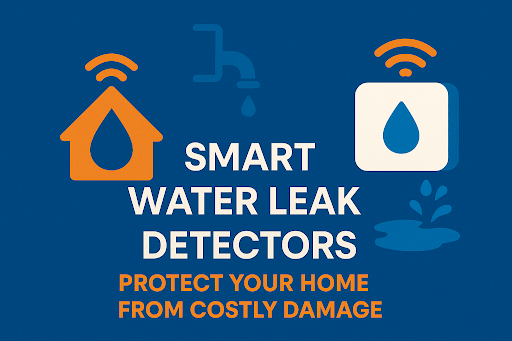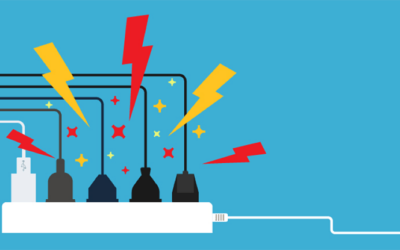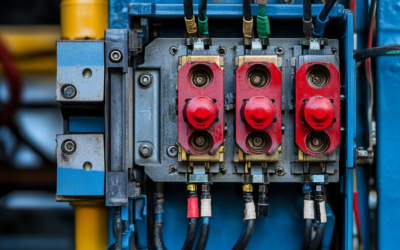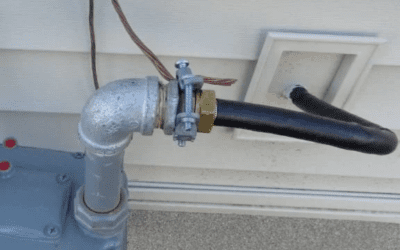In this article, we want to go over the most common home electrical problems and how to solve them!
We all know that electrical issues are a common concern for homeowners. Whether it’s flickering lights, a tripping breaker, or dead outlets, these problems can disrupt daily life and, in some cases, pose serious safety risks. In this guide, we’ll explore some of the most common home electrical problems, how to troubleshoot them, and when to call an electrician for professional help.
Let’s get started!
Why You Need to Know About Common Home Electrical Problems
Understanding common electrical problems is essential for maintaining a safe and efficient home. Electrical issues like overloaded circuits, faulty wiring, and tripping breakers can lead to fire hazards, electric shocks, or damage to appliances if ignored. Identifying warning signs—such as flickering lights, buzzing outlets, or burning smells—can help prevent costly repairs and ensure your electrical system is functioning properly. Additionally, outdated electrical panels or improper installations may violate building codes, which can create safety risks and complications when selling your home.
Basic knowledge of troubleshooting can also save time and money by helping you address minor issues, like resetting a tripped breaker or identifying an overloaded circuit, without needing immediate professional help. This is especially useful during power outages or emergencies when electricians may not be readily available. While serious electrical problems should always be handled by a professional, understanding how your home’s electrical system works allows you to spot potential issues early and keep your home safe.
1. Power Outages: What to Do When the Electricity Goes Out?
A power outage is one of the most common home electrical problems. It can be frustrating, especially if you don’t know whether the issue is within your home or due to an external problem.
Step 1: Identify the Cause
- Check if your neighbors also lost power. If the entire neighborhood is affected, the outage is likely due to a power grid failure or maintenance work. In this case, call your local utility provider for an update.
- If only your home is without power, the problem is likely within your electrical system. The problem is generally caused by an overloaded circuit, a short circuit, or loose wiring.
Figure 1
Step 2: Check for an Overloaded Circuit
Many power outages within a home are caused by an overloaded circuit, which happens when a single circuit carries more current than it can handle. This commonly occurs when using:
✔ Hairdryers
✔ Space heaters
✔ Air conditioners
✔ High-power kitchen appliances
When too much current flows through a circuit, the breaker trips to prevent overheating and potential fire hazards.
Step 3: Reset the Circuit Breaker
- Unplug all appliances from the affected circuit.
- Go to your electrical panel and locate the tripped breaker—it may not be fully in the “Off” position but stuck in the middle.
- Turn the breaker fully “Off” and then back “On.”
- Plug appliances back in one at a time to see if one is causing the circuit overload.
Figure 2
Learn more about your home’s electrical panel here:
All You Need to Know About Your Home’s Electrical Panel – Part 1
All You Need to Know About Your Home’s Electrical Panel – Part 2
Step 4: Prevent Future Overloads
- If your electrical panel is outdated, consider upgrading to a 100-200 amp service to support modern power demands.
- Avoid plugging too many high-wattage devices into a single circuit.
- Use dedicated circuits for large appliances such as refrigerators, washers, and space heaters.
2. Frequent Circuit Breaker Tripping: What It Means
A breaker that keeps tripping indicates an underlying issue, such as:
✔ An overloaded circuit (too many devices drawing power from the same breaker)
✔ A short circuit (faulty wiring causing electrical resistance)
✔ A ground fault (leakage of electricity to the ground, often in wet areas like bathrooms and kitchens)
How to Troubleshoot:
- Unplug everything from the affected circuit and reset the breaker.
- If the breaker trips again immediately, check for signs of damage, such as burn marks, melted outlets, or frayed wires.
- If no visible issues are found, contact an electrician for a thorough inspection.
3. Flickering or Dimming Lights: Should You Be Concerned?
One of the most common home electrical problems is flickering or dimming lights, which can signal:
✔ Loose electrical connections (a fire hazard!)
✔ Voltage fluctuations due to overloaded circuits
✔ Faulty light bulbs or fixtures
Figure 3
How to Fix It:
- Try a new bulb to rule out a simple problem.
- Check your circuit breaker to see if it’s overloaded.
- If flickering occurs when large appliances start, your electrical panel may need an upgrade to a higher amperage.
⚠ Warning: If flickering lights are accompanied by a burning smell or buzzing sounds, turn off power to that area and call an electrician immediately.
4. Dead Outlets: Why Some Outlets Stop Working
A dead outlet can be caused by:
✔ A tripped breaker or GFCI outlet
✔ Loose wiring inside the outlet
✔ Burnt connections due to overheating
How to Check If an Outlet or Switch Has Power
Determining whether an electrical outlet or switch is live is a straightforward process that can be done safely using the right tools.
Using a Non-Contact Voltage Tester
One of the simplest and safest ways to check for electrical current is with a non-contact voltage tester. This device detects voltage without requiring direct contact with wires. To use it, place the insulated tip inside an outlet slot or near a switch—if the circuit is active, the tester will indicate the presence of electricity.
Figure 4
Using a Neon Tester
To check if an outlet is functioning, insert the probes of a neon tester or circuit tester into the slots. Avoid touching the metal ends of the probes while they are inserted. If the tester lights up, the outlet is live.
Figure 5
For testing a light switch:
- Remove the switch’s cover plate.
- Hold a non-contact tester near both screw terminals—if one causes a reaction, that terminal is live.
- If using a neon tester, carefully unscrew the switch from the electrical box while avoiding direct contact with exposed wiring.
- Hold the insulated probes of the neon tester, placing one on a hot wire or terminal and the other on a neutral wire, grounding conductor, or metal electrical box. If power is present, the tester will light up.
Figure 6
How to Fix It:
- Check GFCI outlets. If an outlet in your kitchen, bathroom, or outdoor area isn’t working, it may be part of a GFCI (Ground Fault Circuit Interrupter) system. Press the reset button to restore power.
Figure 7
- If that doesn’t work, check your electrical panel for a tripped breaker.
- If an outlet has black marks or a burning smell, immediately stop using it and call an electrician.
Figure 8
5. Short Circuits: How to Identify and Fix Them
A short circuit occurs when a hot wire touches a neutral or ground wire, creating a sudden surge of electricity that trips the breaker.
Signs of a Short Circuit
✔ A burnt smell near an outlet or switch
✔ Black smudge marks around electrical fixtures
✔ The breaker immediately trips after resetting
Troubleshooting Steps
Step 1: Identify a Potential Short Circuit
- Turn off all wall switches and unplug all devices (lamps, appliances) connected to the dead circuit.
- Reset the tripped breaker or replace the fuse, as previously explained.
- If the circuit immediately loses power again, there may be a short circuit in an outlet or switch.
- With the power turned off, remove the cover plates of any suspect switches or outlets.
- Look for exposed or damaged wires that could be touching each other or the metal box.
- Check for any signs of burnt or charred insulation and repair or replace any compromised wiring.
Step 2: Test Wall Switches and Outlets
- After resetting the breaker or replacing the fuse, if the circuit breaker does not trip or the new fuse does not blow right away gradually turn on each wall switch one by one.
- If switching one of them causes the breaker to trip or the fuse to blow, that switch or its connected fixture is likely the issue.
- Repair or replace any defective switches, fixtures, or wiring.
Step 3: Check Appliances and Lamps
- If none of the wall switches cause the circuit to fail, start plugging in appliances one at a time.
- If the circuit remains functional after plugging in each device, the original issue was likely an overload.
- However, if the circuit fails immediately after plugging in a specific appliance, that device is the culprit.
- Inspect the cord and plug for damage before using the appliance again. If the issue persists, consult an appliance repair specialist to examine its internal electrical components.
6. Overloaded Electrical Panels: Is Yours Up to Code?
An outdated electrical panel can cause power interruptions, especially in older homes.
Signs You Need an Upgrade
✔ Lights dim when appliances turn on
✔ Frequent circuit trips even with normal usage
✔ Your panel has tandem breakers, which may violate the code
Installing tandem breakers in a single slot instead of using multiple single-pole breakers is considered a code violation. Unlike double-pole breakers, which occupy two slots, tandem breakers fit into a single circuit slot while controlling two separate circuits. Although the immediate risk may be low, this setup can lead to panel overloads over time. To correct this issue, homeowners can either install a sub-panel for additional circuits or upgrade to a larger electrical panel with more available slots.
Solution
Upgrading to a 150-200 amp panel allows your home to handle modern electrical demands, preventing overloads and increasing safety.
7. Overheating Outlets & Switches: A Fire Risk
Outlets and switches should never feel hot unless they are dimmer switches.
Common Causes
✔ Loose connections causing electrical arcing
✔ Overloaded circuits pushing too much power through the outlet
What to Do
- Stop using the outlet immediately and unplug all devices.
- If the outlet remains warm, call an electrician—this could indicate an overheating wire that may lead to a fire.
8. Light Bulbs Burning Out Too Quickly
If you’re frequently replacing light bulbs, you may have:
✔ A loose connection in the socket or wiring
✔ A fixture that isn’t rated for high-wattage bulbs
✔ Overheating issues due to insulation near recessed lighting
Solution
- Use bulbs with the correct wattage rating for your fixture.
- If recessed lights frequently fail, ensure proper ventilation to prevent overheating.
9. Not Enough Outlets? Here’s What to Do
Overusing power strips and extension cords increases fire risk.
Solution
✔ Install more outlets in high-use areas (kitchens, home offices, entertainment centers).
✔ If using power strips, choose heavy-duty ones (14-gauge or thicker) to handle higher electrical loads.
10. Uncovered Junction Boxes: A Hidden Hazard
Junction boxes house electrical connections, and if left uncovered, exposed wires pose a shock risk.
Solution
- Securely install a cover plate over the junction box.
- Ensure all wires inside are properly connected and insulated.
Conclusion
While some common home electrical problems can be resolved with simple troubleshooting, others require professional intervention.
🚨 Call an electrician if you notice:
✔ Burning smells, hot outlets, frequent power trips, or exposed wires
✔ Your home still uses an outdated 60-amp panel
✔ Signs of faulty wiring behind walls
Upgrading your electrical system ensures safety, efficiency, and convenience. If you’re dealing with ongoing electrical issues, don’t ignore them—get expert help today.


![Philadelphia Sump Pump Installation Requirements [2025 Guide]](https://matrixgc.com/wp-content/uploads/2025/06/Philadelphia-Sump-Pump-Installation-Requirements-2025-Guide.png)





I loved up to you will receive carried out proper here. The cartoon is attractive, your authored material stylish. nevertheless, you command get bought an impatience over that you would like be delivering the following. in poor health undoubtedly come further until now once more as exactly the same nearly a lot steadily inside of case you defend this hike.